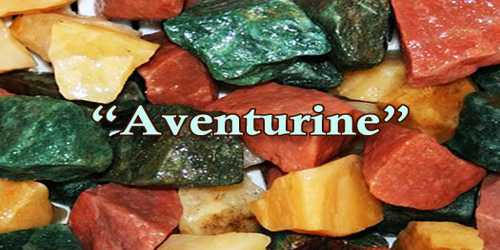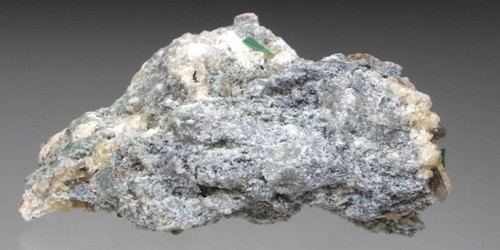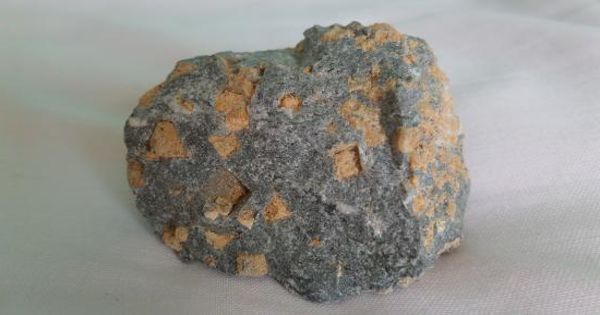Definition –
“Aventurine”, also spelled Avanturine, is a form of quartz, characterized by its translucency and the presence of platy mineral inclusions that give a shimmering or glistening effect termed ‘aventurescence’. The inclusions can also impart a distinct, and often beautiful, color to the material.
The most common inclusion in aventurine is fuchsite, a green chromium-rich mica. Just a few percent fuchsite by volume can impart a distinct green color to aventurine.
The name aventurine derives from the Italian “a ventura” meaning “by chance”. This is an allusion to the lucky discovery of aventurine glass or goldstone at some point in the 18th century. One story runs that this kind of glass was originally made accidentally at Murano by a workman, who let some copper filings fall into the molten “metal,” whence the product was called avventurino. From the Murano glass, the name passed to the mineral, which displayed a rather similar appearance.
Most aventurine quartz is silvery, yellow, reddish-brown, or green. Extensive beds in mica schist occur in the Russian Urals. Green aventurine, colored by a chrome mica, has been found in the state of Tamil Nadu (formerly Madras), India; in China; and in Rutland, Vt. Aventurine quartz is used for jewelry, for vases and bowls (sometimes very large), and for other ornamental objects.
Sources and Properties of Aventurine –
Small amounts of aventurine have been found in many parts of the world. India is by far the most important commercial producer of aventurine. Brazil is the second-place producer. Russia, Spain, Austria, and Tanzania produce smaller amounts of aventurine.
Aventurine is a rock, its physical properties vary: its specific gravity may lie between 2.64-2.69 and its hardness is somewhat lower than single-crystal quartz at around 6.5.

Aventurine (Quartz)
Many of the common aventurine inclusions have a specific gravity that is higher than quartz. If abundant, inclusions such as hematite, ilmenite, and goethite can give aventurine a specific gravity that is higher than quartz. Although it was known first, goldstone is now a common imitation of aventurine and sunstone. Goldstone is distinguished visually from the latter two minerals by its coarse flecks of copper, dispersed within the glass in an unnaturally uniform manner. It is usually a golden brown, but may also be found in blue or green.
The majority of green and blue-green aventurine originates in India (particularly in the vicinity of Mysore and Chennai) where it is employed by prolific artisans. Creamy white, gray and orange material is found in Chile, Spain, and Russia. Most material is carved into beads and figurines with only the finer examples fashioned into cabochons, later being set into jewelry.
Uses of Aventurine –
Aventurine is a lovely stone used to balance the male/female energies, to help reinforce decisiveness, and supplementing greater motivation in all activities. All of these attributes are once again assisted by Aventurine to offer an inner equilibrium and amplified leadership skills and abilities. Green aventurine is a common material used to produce beads and cabochons. These are used to make earrings, pendants, rings, and other jewelry. Other colors of aventurine are used to produce these items, but they are seen less often because nice aventurine in those colors is less common.
Aventurine is sometimes used to make bowls, vases, and small sculptures. Green aventurine is a popular and less expensive alternative for jade and amazonite. Some buyers simply want attractive greenstone, and the flash of aventurine suits them.
Aventurine has been also used in Medicine Wheel rituals to assist connection with the spirit guides by lifting the true heart one (or a group) becomes a beacon to the guides. Physically, Aventurine has effectiveness on the adrenal glands, muscular system, connective tissues, and nervous system. Said to be one of the best stones for relief of migraine headaches. Always helpful with eyes and eyesight, it also helps one “see” in true light.
Aventurine is most effective when worn or carried for longer periods of time, the longer it is utilized the more effective the results will be.
Information Sources:
















